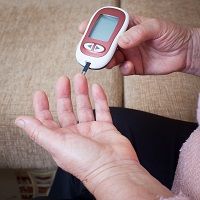Article
Improving Control in T2DM Patients: Add Insulin
Author(s):
Maintaining glycemic control using insulin.

Adding insulin to a treatment regimen can help people with progressing type 2 diabetes mellitus (T2DM) maintain glycemic control. Typically, most experts recommend adding basal insulin, but basalization has its limits.
Fasting blood glucose and HbA1c improve only up to a therapeutic ceiling unique to each person — a point at which a diminishing relationship between insulin given and glycemic effect develops. This “overbasalization” appears to occur when the insulin dose approaches 0.5 to 0.8 units/kg.
Insulin intensification, the sequential addition of 1 to 4 mealtime injections of rapid-acting insulin, is employed to cover prandial glucose excursions. Alternatively, patients can use a fixed premixed formulation with prandial insulin.
A study published in the Endocrine Practice study explored 2 self-titration algorithms (‘Simple’ versus ‘Stepwise’) for efficacy and safety. The simple algorithm involved adjusting the dose twice-weekly based on a single pre-breakfast and pre-evening meal self-monitored plasma glucose [SMPG] measurement. The ‘Stepwise’ algorithm involved a once-weekly dose adjustment based on the lowest of 3 pre-breakfast and 3 pre-evening meal SMPG values. Each arm enrolled 136 adults, and they used an insulin degludec/insulin aspart (IDegAsp) combination product twice daily.
At 26 weeks, the researchers determined that the Stepwise algorithm was noninferior to the Simple algorithm.
Sixty-six percent of patients using the Simple algorithm group achieved HbA1c of 7% or lower, as did 62.5% of patients in the Stepwise algorithm. Both algorithms were associated with reduced fasting plasma glucose levels. The Simple algorithm was associated with slightly more weight gain (3.8 kg) than the Stepwise algorithm (2.6 kg).
Rates of confirmed hypoglycemia and nocturnal confirmed hypoglycemia were significantly lower in the Stepwise algorithm. Insulin dose increments were similar in both arms.
The researchers noted that managing glycemic targets in patients with T2DM must consider the patient’s unique characteristics and preferences. In this study, both titration algorithms — the Simple algorithm, which was considered new, and the Stepwise algorithm, which was considered conservative – were well tolerated. In this case, the more conservative Stepwise algorithm was associated with less weight gain and fewer hypoglycemic episodes.





